Reclamation works for Woodlands Checkpoint unlikely to affect mangrove habitats in Mandai and Sungei Buloh
Sign up now: Get ST's newsletters delivered to your inbox
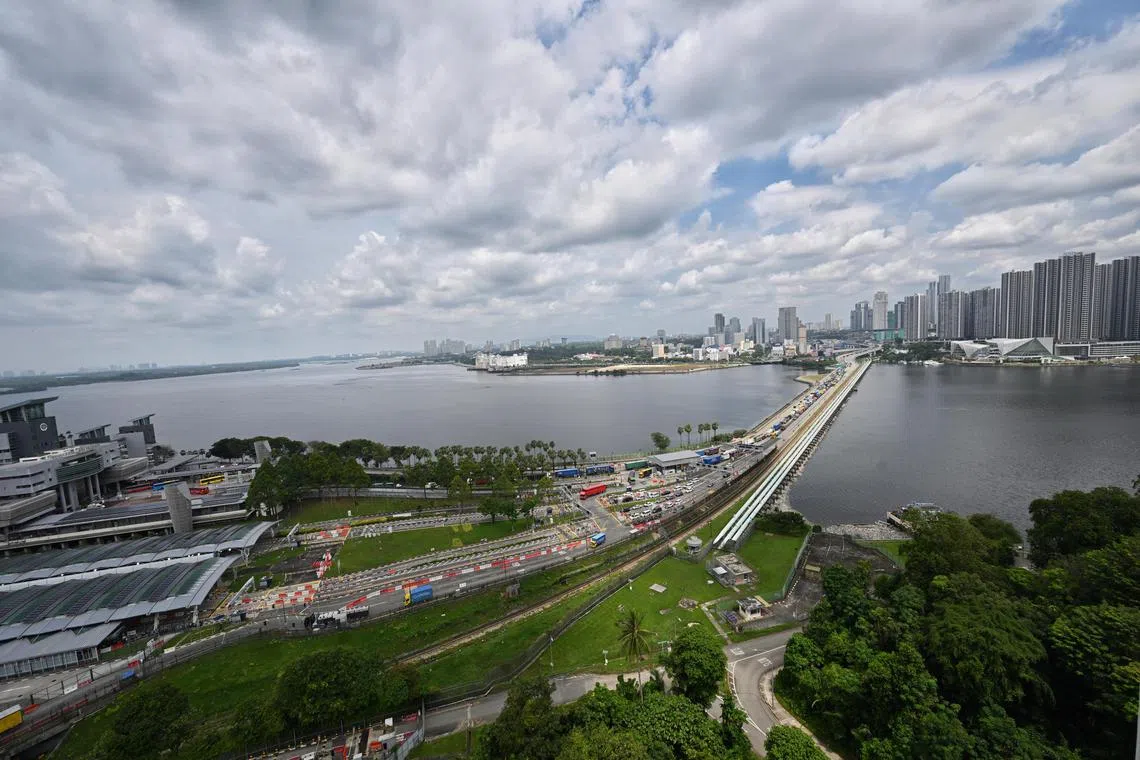
Reclamation works slated to begin in the third quarter of 2024 to expand the Woodlands Checkpoint are unlikely to negatively affect the mangrove habitats at the neighbouring Mandai mangrove and mudflat, say JTC and ICA.
ST PHOTO: SHINTARO TAY
Follow topic:
SINGAPORE – Reclamation works planned for the Woodlands area to expand the border checkpoint are unlikely to have a negative impact on the habitats in the neighbouring Mandai Mangrove and Mudflat.
Instead, changes in the water flow as a result of the reclamation could even increase the number of mangrove plants that settle around the reclamation site, said industrial developer JTC Corporation and the Immigration and Checkpoints Authority (ICA).
If the seedlings of mangrove trees from Mandai can grow and populate the adjacent areas, this could be ecologically beneficial in the long run, said the authorities, citing the results of an environmental impact assessment done by JTC ahead of the development works.
JTC and ICA were responding to queries from The Straits Times, following an ST report on March 17 about how land will be reclaimed on both sides of the Causeway to expand the Woodlands Checkpoint
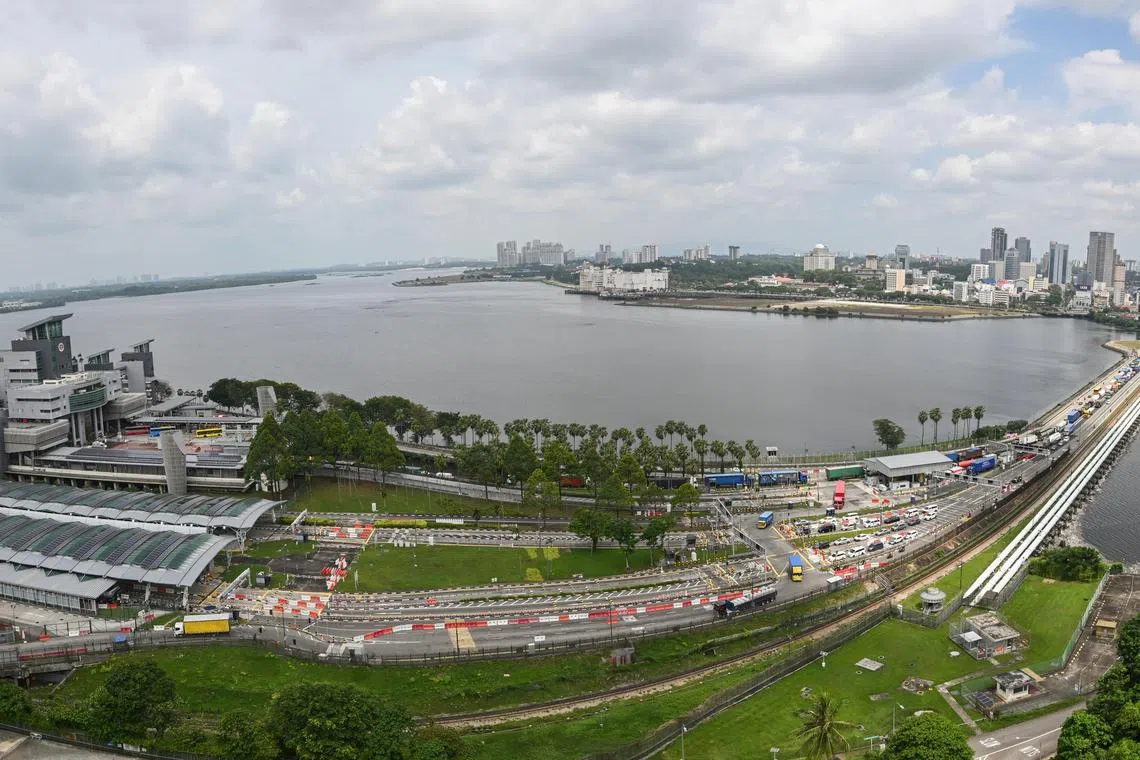
Reclamation works to expand Woodlands Checkpoint have been scaled back from initial plans to reduce environmental impact.
ST PHOTO: SHINTARO TAY
The aim is to reduce the average clearance time for all vehicles from 60 minutes to 15 minutes during peak periods. Some 300,000 travellers cross the border each day.
The reclamation works, which will be scaled back from initial plans to reduce the environmental impact, are tentatively scheduled to start in the third quarter of 2024 and be completed by 2029.
The authorities had originally wanted to reclaim 30.2ha of land on the eastern side of the Causeway, and 36.4ha of land on the western side. This has been reduced to about 10ha on the eastern end and 34ha on the western side.
The reclamation on the western part is next to the Mandai Mangrove and Mudflat, a habitat rich in wildlife such as molluscs, crustaceans and worms that was designated a nature park by the National Parks Board (NParks) in 2018.
The mudflat is located about 3km away from Sungei Buloh Wetland Reserve, one of Singapore’s four nature reserves.
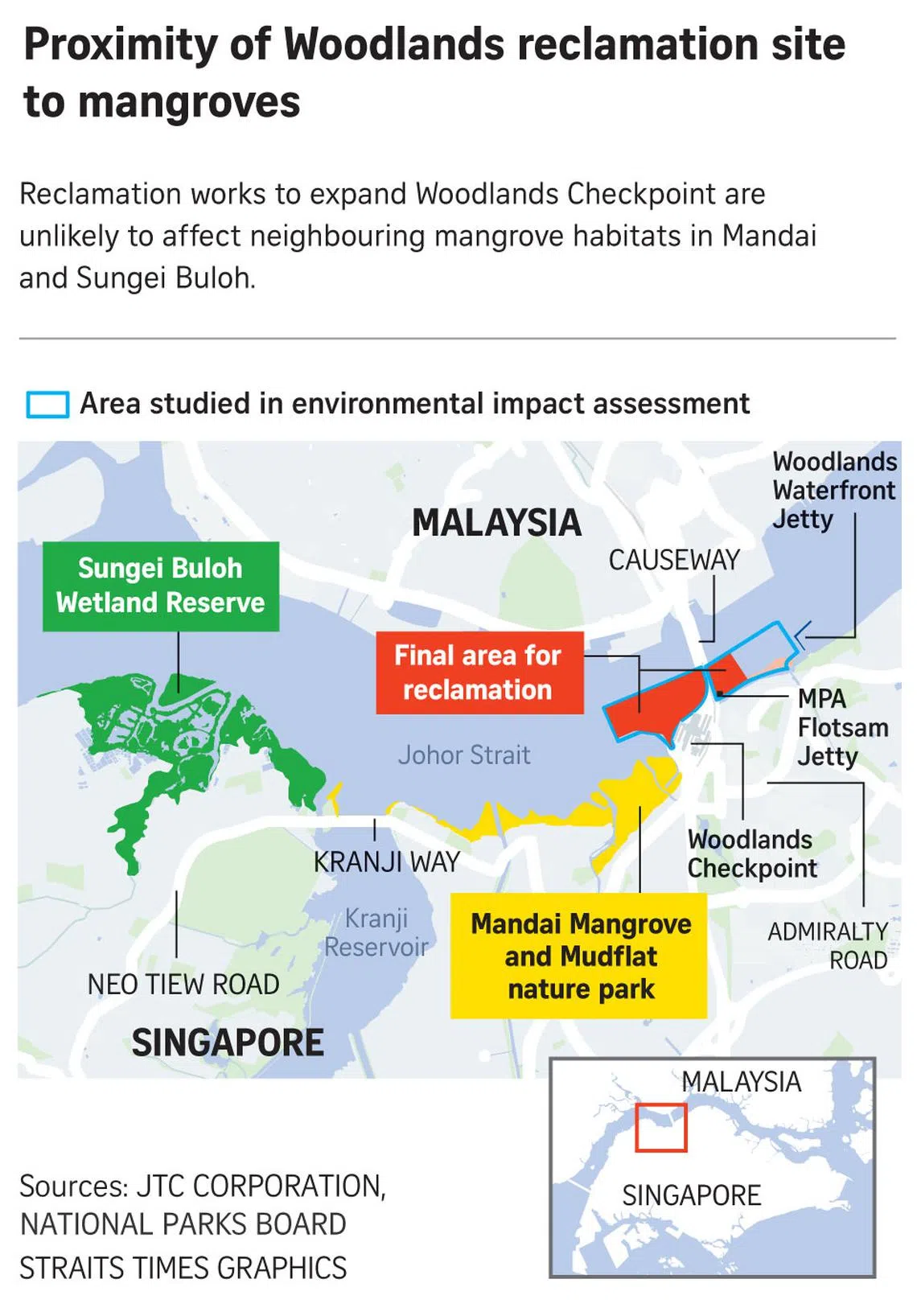
In 2022, a mapping exercise by NParks of natural habitats found strong connectivity between the Mandai mudflat and Sungei Buloh wetlands. For example, many migratory shorebirds have been observed roosting in the wetlands during high tide, and flying to forage at the Mandai mudflat when it is exposed at low tide.
The report highlighted the importance of conserving both habitats to ensure Singapore’s mangroves continue to thrive.
JTC and ICA said that the environmental impact assessment for the reclamation studied the potential impact to the ecological connectivity between both mangrove forests.
“Specifically, it assessed the transport of mangrove propagules between the two mangrove forests,” said the authorities.
Mangrove propagules are the germinated seeds that grow into mangrove trees.
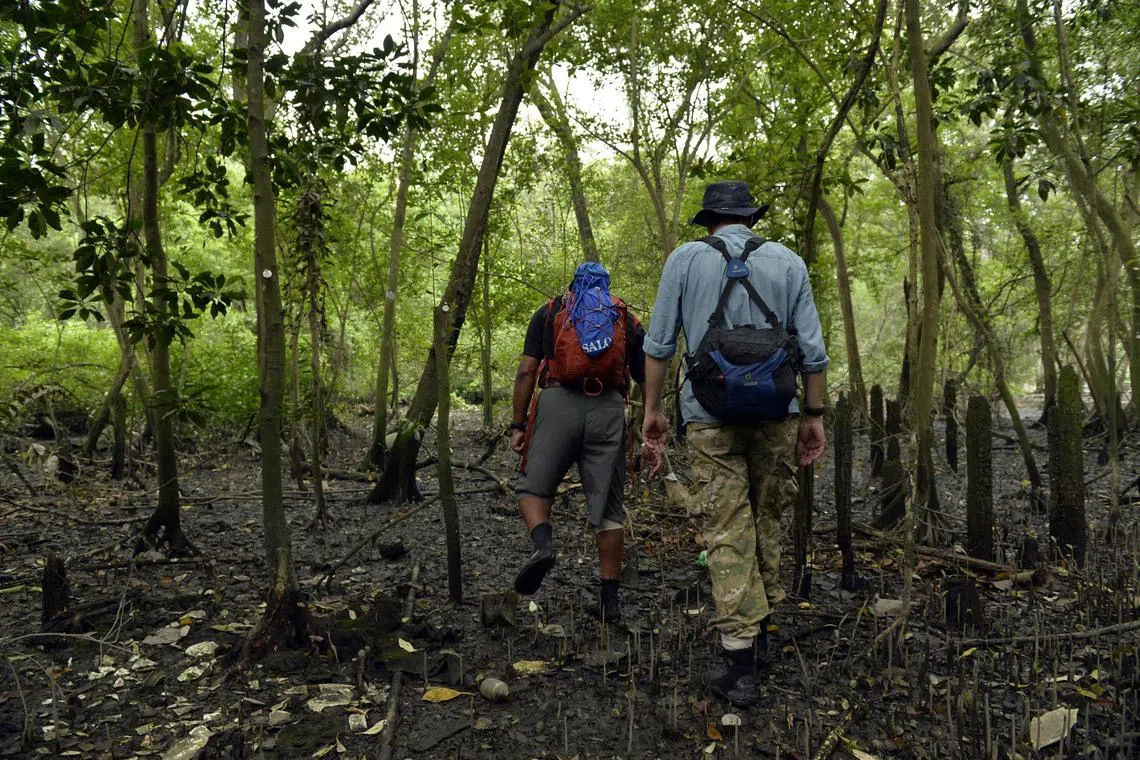
The Mandai Mangrove and Mudflat was conserved as a nature park by NParks in 2022.
ST PHOTO: DESMOND FOO
They are spread by the weak currents circulating in the Johor Strait – the body of water located to the north of mainland Singapore – from the mangrove forests in Mandai and Sungei Buloh to other coastal areas along the Johor Strait.
The modelling results in the assessment concluded that the reclamation works would have a minimal impact on the number of mangrove propagules within the planned reclamation area, said JTC and ICA.
Instead, the hydrodynamics change could result in “a potential increase in the number of propagules that settle in the surrounding fringe areas”, they added.
“Modelling results had shown that due to the reclamation works, a larger proportion of the mangrove propagules is directed westward, and will result in a slight increase in propagule accumulation at the mangrove fringe area,” said the JTC spokesperson.
The assessment also did not show any impact to the habitats and wildlife living in the seafloor at Sungei Buloh, said JTC and ICA.
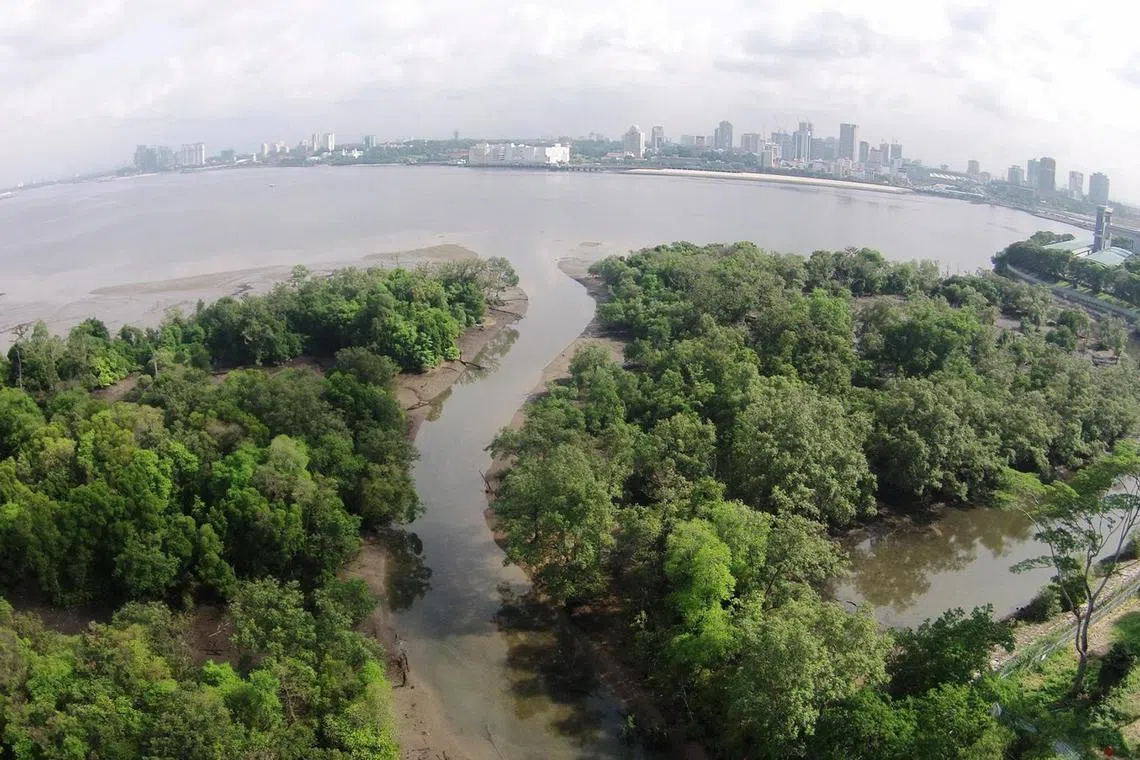
There are strong habitat connectivity links between the Mandai Mangrove and Mudflat and Sungei Buloh Wetland Reserve, according to an ecological profiling exercise done by NParks in 2022.
PHOTO: NPARKS
JTC and ICA also said that measures will be taken to reduce the impact on migratory birds.
For example, seawall construction and marine works will stop within 100m of the Mandai Mangrove and Mudflat during the bird migration period between September and March, so that the birds are not disturbed by the noise and construction activities.
These works will carry on outside the migratory period, said JTC.
Nonetheless, nature groups have expressed concerns about whether the mitigation measures are enough, given that the Mandai Mangrove and Mudflat is an important part of the East Asian-Australasian Flyway. The world’s largest migratory bird highway spans more than 30 countries from the Arctic Circle to Singapore and south to Australia and New Zealand.
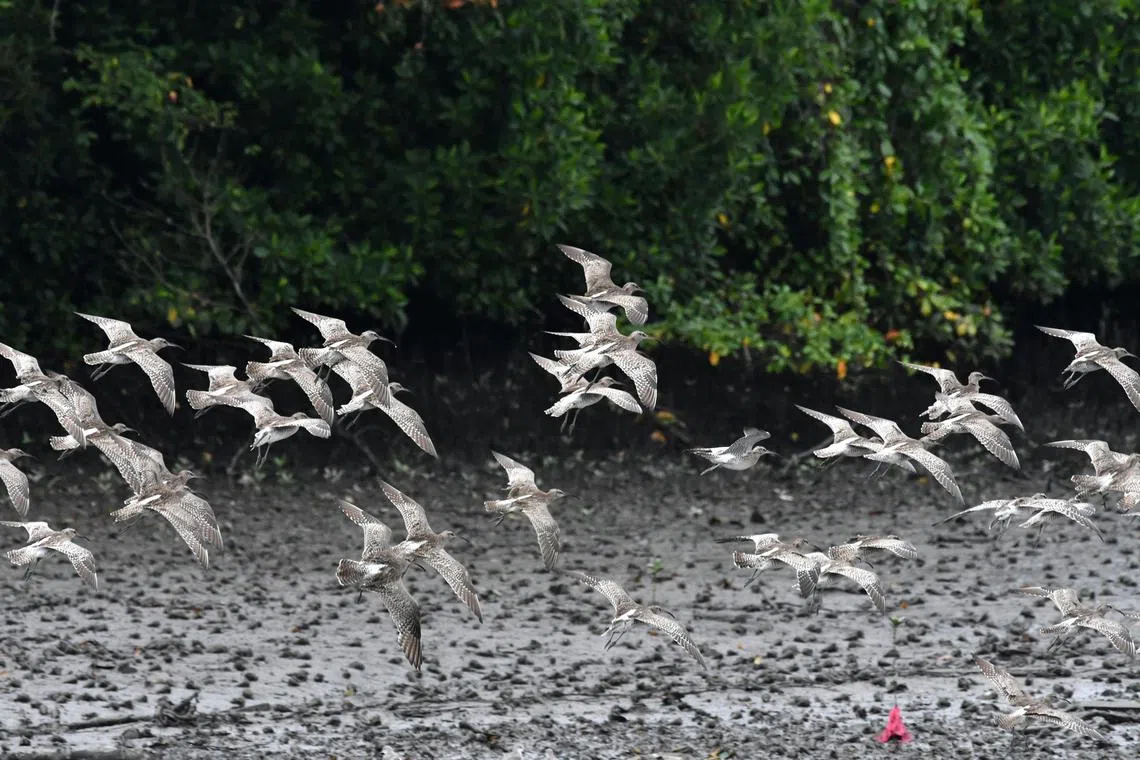
A large flock of whimbrels at Sungei Buloh Wetland Reserve in 2017.
ST FILE PHOTO
Migratory birds feed on macrobenthic fauna – such as worms and crustaceans that live at the bottom of the mudflat – when they stop over in Singapore on their long journeys from as far north as Siberia.
Mr Movin Nyanasengeran, vice-president of the Bird Society of Singapore, said that the mitigation measures planned by JTC, such as curtailing certain works within 100m of the mudflat during the migratory season, are good steps towards safeguarding shorebirds.
“But care needs to be taken to not cause siltation and not result in inadvertent dredging of the mudflat. Loose silt could settle over the mudflats with unforeseen effects on the benthic invertebrates that the shorebirds feed on,” the bird conservationist added.
Siltation occurs when human activities such as agriculture and construction disturb the land and cause erosion, so that bodies of water are filled with sediment and other materials. These settle to the bottom and smother marine life.
JTC and ICA said screens to filter out silt will be installed to minimise siltation and smothering of seabed life. The use of such screens is one of the best practices in construction project management to lessen the impact of reclamation works, they said.
Both agencies said they would regularly monitor the sedimentation and the effect on shorebirds on the mudflat.
Mr Movin said the effectiveness of silt screens depends on how meticulously they are installed and maintained to prevent sediment leaking out. “There needs to be good oversight for that,” he added.
In response, JTC and ICA said that the contractor awarded the reclamation works will optimise the design of the silt screens. The screens will then be reviewed by the environmental management and monitoring plan consultant for their effectiveness.
Mr Muhd Nasry, executive director of Singapore Youth Voices for Biodiversity, said finer particles that remain suspended in water may block light from reaching photosynthetic organisms living in the marine habitats in the area, such as the critically endangered Beccari’s seagrass, which is believed to act as nurseries for horseshoe crabs.
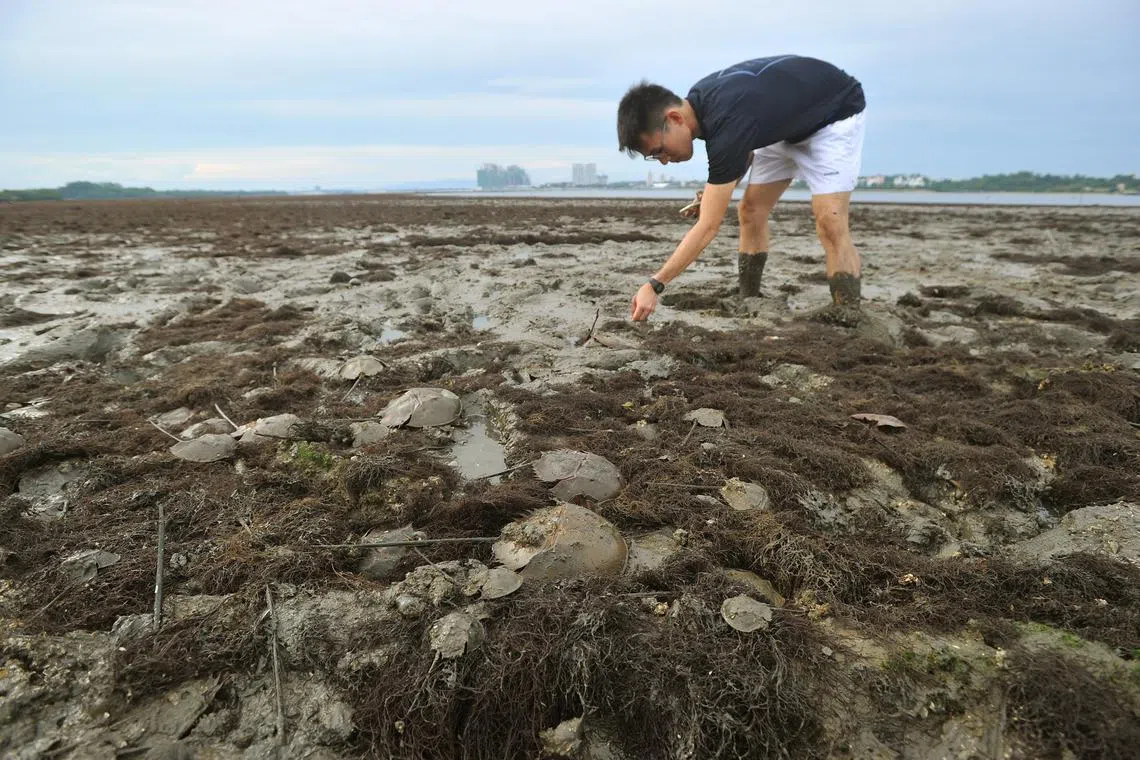
Permanently high numbers of horseshoe crabs reside in the Mandai mudflat at Kranji.
ST PHOTO: LIM YAOHUI
Eggs of horseshoe crabs are a source of food for migratory birds such as the sandpiper and the ruddy turnstone.
Segmented worms known as polychaetes – a significant part of marine food chains – are eaten by fish, crustaceans and other animals that live in the mudflat.
Changes to the sedimentation in the mudflat may affect their populations, “which in turn may cause ripple effects impacting other animals that live in the mudflat – this may also affect migratory bird populations internationally”, added Mr Nasry.
Correction note: This story has been updated for accuracy.

